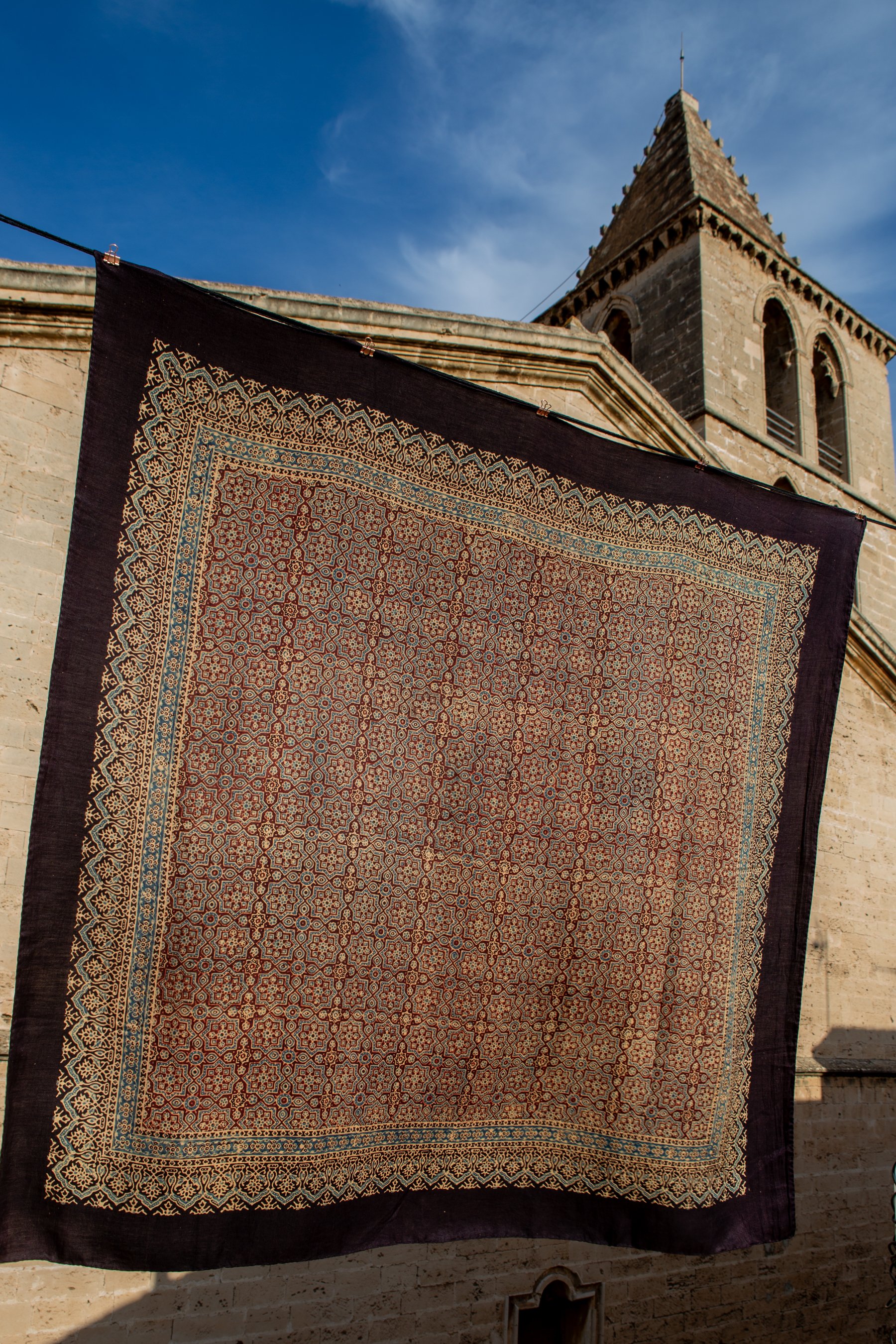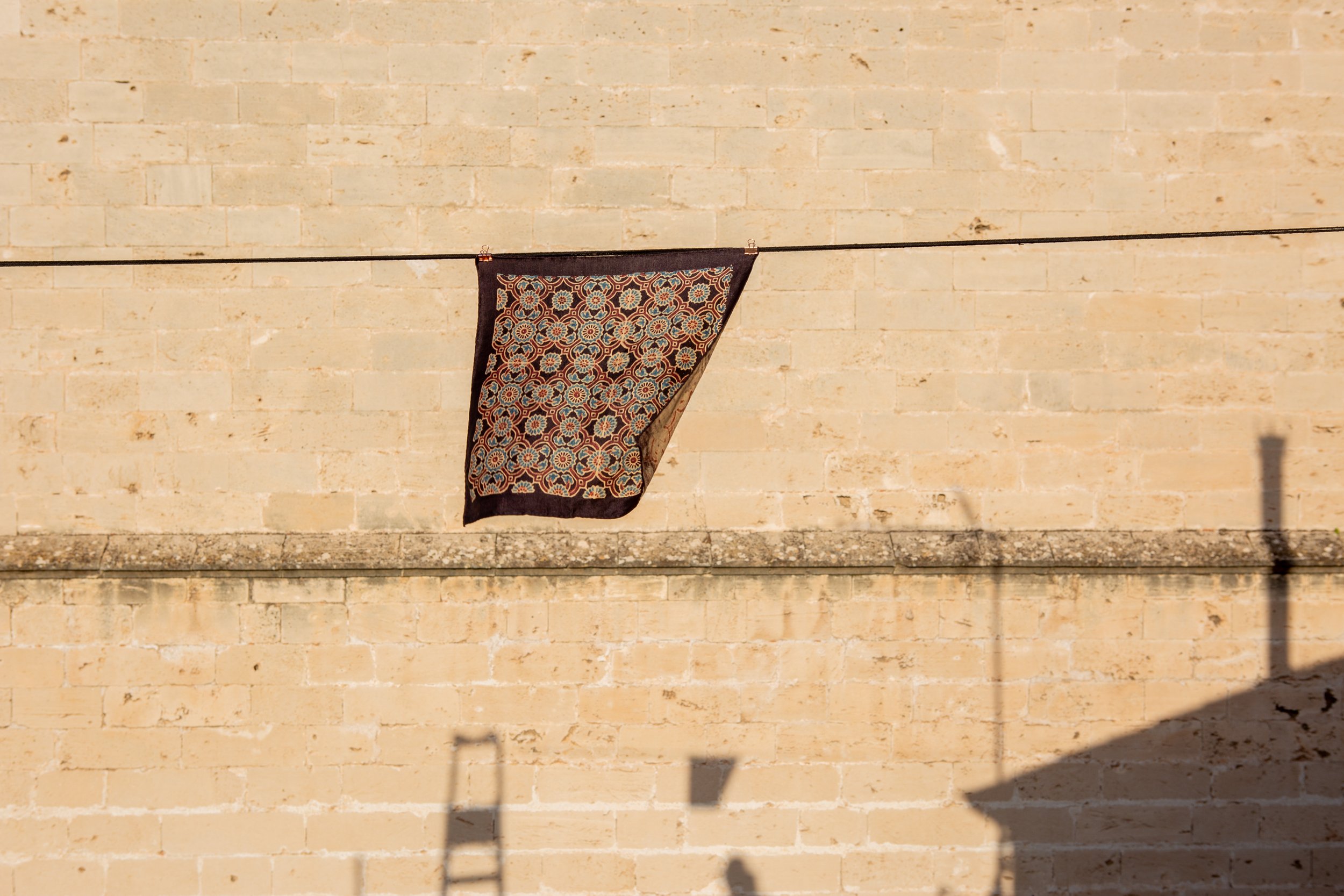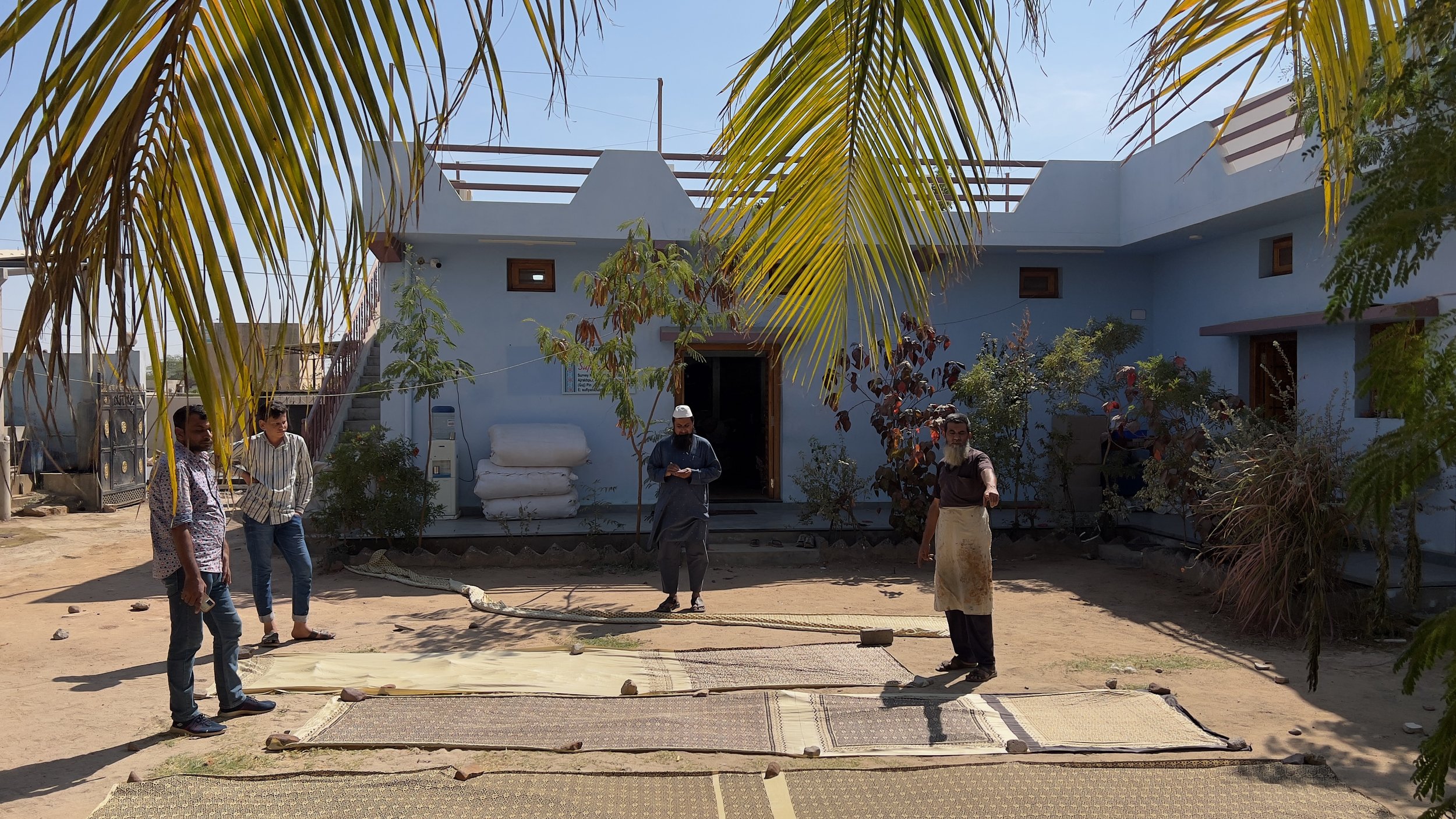
ABOUT OUR FINE SILKS
MASHRU SILK
The word ‘Mashru’ means ‘permitted’ in Arabic, and the Sanskrit variation ‘Misru’ means ‘mixed’. The tradition of this particular weave of silk is said to have originated during the medieval Tughlaq dynasty (1320-1413) when a ban on wearing pure silk was introduced.
Royals and regal society were incensed as their gowns, coats and headdresses were made of fine silk.
Weavers designed a workaround by creating additional warp in fine cotton to appear on the backside, creating a layer between the pure silk and the skin and thus acceptable.
Subsequently, the Mashru weave was deemed as lawful and became a rich craft abundantly woven in the 1900s for elites and royals.
The fine layer of cotton on the backside creates an exceptional softness and supple drape, as well as a beautiful muted version of the print.
FINE SILKS
BLOCK PRINTED BY HAND WITH NATURAL DYE
Handcraft is refined work and artisans are the caretakers of valuable heritage.
Hartwick Atelier works with an artisan community that has been creating these fabrics for more than 10 generations.

Rooted in thousands of years of knowledge, these pieces are made using the natural rhythms of the sun, wind, and water.
Master Colorists use ancient methods to create natural dyes using indigenous plants and minerals including wild indigo, pomegranate bark and seeds, tamarind, turmeric, jaggery, ash, and iron.
Using hand carved wooden blocks, Master Printers print each colour, layer by layer using resist dyeing techniques to create intricate interpretations of floral and celestial patterns. These processes give way to lustrous geometric colorscapes with deep tonal range.
Each piece requires a minimum of 16 processes, with the silk resting for at least a day between each step.
Handcrafted using the natural rhythms of the sun, wind and water.

MADE BY MASTERS




